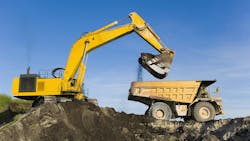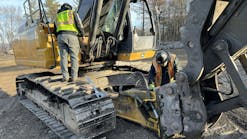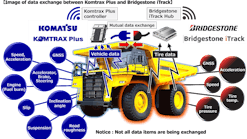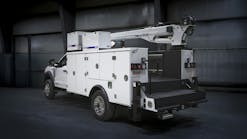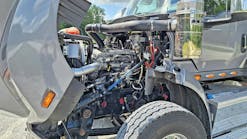Proper equipment lubrication has tremendous potential for cost reduction not only on projects, but also on overall fleet operations. In fact, ensuring that a fleet of construction equipment is utilizing quality lubricants and best-in-class lubrication practices can yield a return on investment up to 40 times greater, according to The Practical Handbook of Machinery Lubrication.
A regular lubrication program is a vital part of a fleet’s maintenance management, and it impacts equipment reliability, uptime, and overall project success.
A robust lubrication program begins by meeting all three crucial lubricant specifications for equipment: viscosity, performance, and cleanliness. Viscosity and performance depend on selecting the right lubricant with the appropriate blend of base oil and additives. This ensures smooth operation and optimal performance, preventing unnecessary breakdowns and costly delays.
Read also: A tool to evaluate equipment reliability
Compatibility questions are undoubtedly one of the most common challenges for fleet managers in properly lubricating equipment but remain some of the most difficult to answer since virtually every scenario is unique. There are a number of factors that can affect the compatibility of a lubricant with equipment, such as the base oil and additive chemistry, in addition to the age and condition of the product.
The first step in deciding how to approach compatibility is to understand what compatibility is or—better yet—what it is not. Two lubricants of the same viscosity, or two that are considered comparable, for example, might not necessarily be compatible. Even if a product is deemed a “suitable replacement” for another, the two should not be mixed without consideration for potential adverse reactions. The safest way to ensure against accidental damage to a component is to ensure that it is fully purged of a previous grease before adding a new one.
To combat equipment wear and defects over time, equipment managers must recognize the critical role of lubricant cleanliness, particularly in construction environments. Before using equipment, fleet managers must ensure that the equipment is filled with lubricants that meet the OEM’s cleanliness specifications and are optimal for the application. They must also maintain the correct drain intervals, which can significantly reduce defects, improve reliability, and extend equipment life. Although the pressure to reduce costs might tempt some construction managers to settle for lower-quality lubricants, the resulting cost savings are overshadowed by reduced productivity, premature component failure, and shortened service intervals.
Contamination remains a significant problem in lubrication. Research by The National Research Council of Canada (NRCC) found that 82 percent of mechanical wear is caused by particle contamination in lubricants. Dirt and contaminants are the primary culprits behind hydraulic system failures. These microscopic contaminants, including dirt particulates, moisture, varnish, and gasses, not only damage equipment but also degrade the performance and lifespan of lubricants.
Read also: How to set fluid contamination flagging limits
Although choosing a lubricant with proper cleanliness specifications is important, maintaining cleanliness depends on how the lubricants are stored and handled. When on a job site, there are infinite opportunities for dust, dirt, or debris to penetrate a component system and change the composition of the lubricant. Conditions such as temperature also affect the viscosity of a lubricant, which can be consequential in how the component functions. Neglecting cleanliness and conditions can impact optimal lubrication and reliability, adversely affecting the overall job efficiency.
Equipment managers should adopt a proactive strategy for their machinery’s lubrication reliability. A lubrication reliability strategy encompasses defect elimination by using clean, proper product handling and storage, and use of a fluid analysis program. Condition-based maintenance (CBM) and predictive maintenance have proven successful in understanding and preventing equipment failures. CBM emphasizes monitoring equipment conditions to determine maintenance needs, and predictive maintenance predicts failure likelihood and outlines corrective steps.
Even with proactive monitoring and maintenance, selecting an inappropriate lubricant for an application still happens far too often. For example, Moly Greases are often incorrectly used in electric motors, which leads to over greasing and component failure. The best method to ensure lubrication reliability is to make sure each component has an identifying system that illustrates which lubricant is needed for the application, how much is needed, and how frequently it should be changed.
Equipment managers seeking ways to optimize efficiency and reduce costs should pay close attention to the role of proper lubrication. Implementing a combined CBM and predictive maintenance strategy, along with a focus on lubricant cleanliness, can yield remarkable results in reducing component wear, eliminating failures, and extending service intervals. Understanding and meeting lubricant specifications, controlling cleanliness, and implementing a lubrication reliability protocol can help equipment managers maximize their fleet’s efficiency and improve overall performance on the job.
